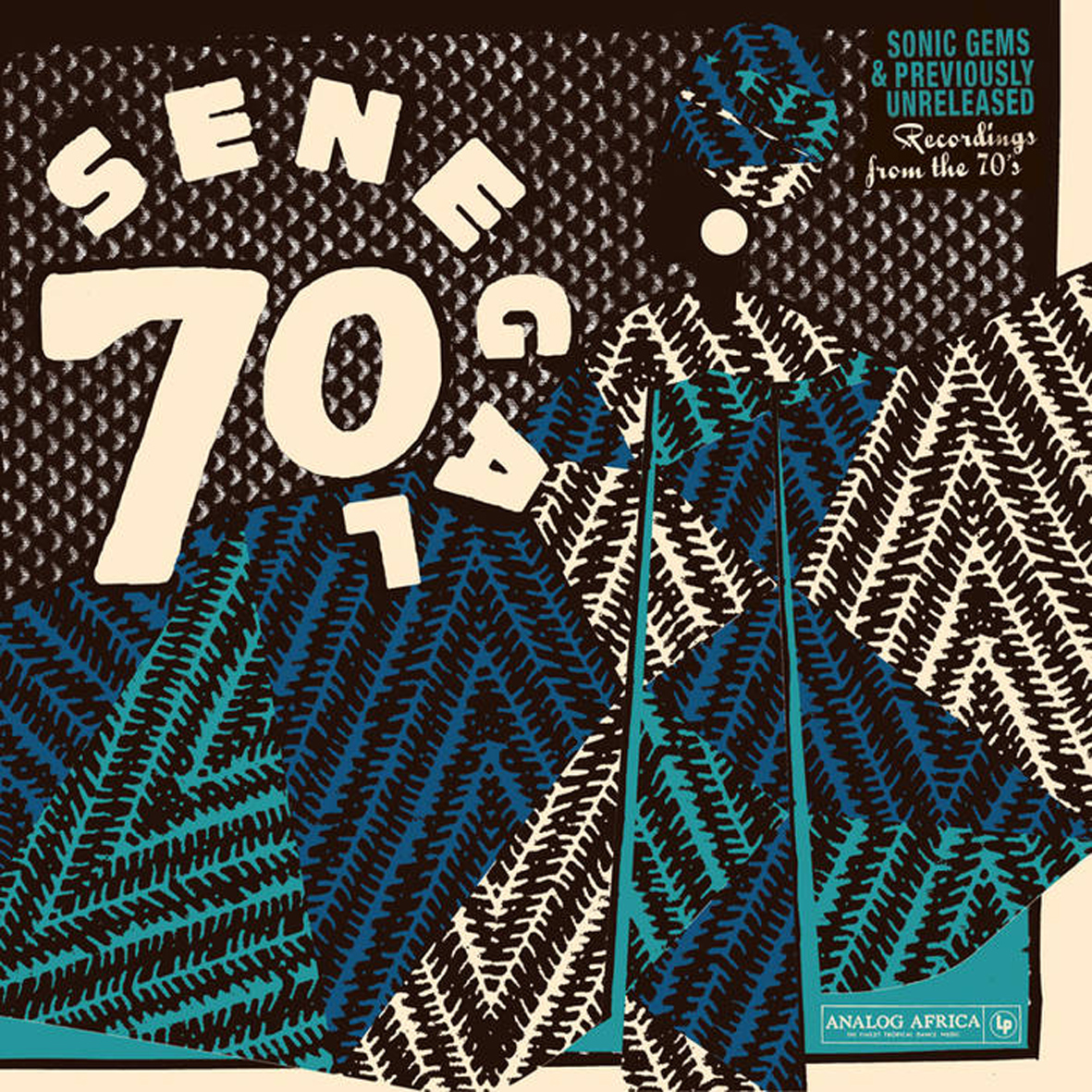 There are very few people around making better compilations than Analog Africa’s Samy Ben Redjeb.  For this latest treasure trove of newly unearthed obscurities, Samy teamed up with Teranga Beat's Adamantios Kafetzis, who tracked down Senegalese sound engineer Moussa Diallo back in 2009 and digitized his large archive of tape reels.  Remarkably, only five songs from that big score made it onto the album, so the duo must have made some very hard decisions in narrowing down Senegal 70 to its lean and consistently excellent 13-song song incarnation.  Happily, one of the songs that made the cut is a previously unreleased piece by the incomparable and woefully underdocumented Amara Touré.  Also present is the long-running and internationally successful Orchestra Baobab, but many of the lesser known artists shine just as brightly (if not more so), making this one of Analog Africa's stronger compilations to date.
There are very few people around making better compilations than Analog Africa’s Samy Ben Redjeb.  For this latest treasure trove of newly unearthed obscurities, Samy teamed up with Teranga Beat's Adamantios Kafetzis, who tracked down Senegalese sound engineer Moussa Diallo back in 2009 and digitized his large archive of tape reels.  Remarkably, only five songs from that big score made it onto the album, so the duo must have made some very hard decisions in narrowing down Senegal 70 to its lean and consistently excellent 13-song song incarnation.  Happily, one of the songs that made the cut is a previously unreleased piece by the incomparable and woefully underdocumented Amara Touré.  Also present is the long-running and internationally successful Orchestra Baobab, but many of the lesser known artists shine just as brightly (if not more so), making this one of Analog Africa's stronger compilations to date.
Two new shows just for you. We have squeezed out two extended release episodes for this weekend to get you through this week. They contain mostly new songs but there's also new issues from the vaults. The first show features music from Rider/Horse, Mint Field, Robert Aiki Aubrey Lowe, Anastasia Coope, ISAN, Stone Music, La Securite, Bark Psychosis, Jon Rose, Master Wilburn Burchette, Umberto, Wand, Tim Koh, Sun An, and Memory Drawings. The second episode has music by Laibach, Melt-Banana, Chuck Johnson, X, K. Yoshimatsu, Dorothy Carter, Pavel Milyakov, Violence Gratuite, Mark Templeton, Dummy, Endon, body / negative, Midwife, Alberto Boccardi, Divine. Cow in Maui from Veronika in Vienna. Get involved: subscribe, review, rate, share with your friends, send images! |



 Clodagh Simonds has had a lengthy and storied career, working with the likes of Mike Oldfield and her own 1970s band Mellow Candle, and her return after a lengthy break with Fovea Hex beginning in 2005. With the rest of the band, including such recognizable artists Michael Begg, Colin Potter, Laura Sheeran. Cora Venus Lunny, and Kate Ellis, and special guests Justin Grounds and Brian Eno, this EP is a captivating, achingly stunning suite of music that defies any sort of classification.
Clodagh Simonds has had a lengthy and storied career, working with the likes of Mike Oldfield and her own 1970s band Mellow Candle, and her return after a lengthy break with Fovea Hex beginning in 2005. With the rest of the band, including such recognizable artists Michael Begg, Colin Potter, Laura Sheeran. Cora Venus Lunny, and Kate Ellis, and special guests Justin Grounds and Brian Eno, this EP is a captivating, achingly stunning suite of music that defies any sort of classification. In his liner notes for The New Attractive, Yu Wakao writes, "In a sense, there is no need for individuality in noise music—ultimately, noise can only be hindered by the individual." Taste, he concludes, is far more important. It’s what separates this noise from that noise, the sound of traffic outside your car window from whatever is on the stereo. It’s a provocative claim because Takuji Naka and Tim Olive’s music on The New Attractive both affirms and refutes it, and because the distinction between taste and individuality is ambiguous. How are we to separate the two? Which one determines the instrument that the artist brings to their art? Which influences their preference for color, duration, and texture? What about volume? Naka and Olive certainly seem present in their work—the use of magnetic pickups and mechanical turbulence is familiar enough, as are the congealed puffs of electronic haze. The brevity of these five untitled tracks, their loose atmospheric structures, and the quiet, almost casual quality of the duo’s interactions all sound deliberate, the product of individuals with distinct tastes. Those qualities rise up and disperse across a wider plateau, however, propelling the music and musicians toward a nebulous border where specifics fall apart.
In his liner notes for The New Attractive, Yu Wakao writes, "In a sense, there is no need for individuality in noise music—ultimately, noise can only be hindered by the individual." Taste, he concludes, is far more important. It’s what separates this noise from that noise, the sound of traffic outside your car window from whatever is on the stereo. It’s a provocative claim because Takuji Naka and Tim Olive’s music on The New Attractive both affirms and refutes it, and because the distinction between taste and individuality is ambiguous. How are we to separate the two? Which one determines the instrument that the artist brings to their art? Which influences their preference for color, duration, and texture? What about volume? Naka and Olive certainly seem present in their work—the use of magnetic pickups and mechanical turbulence is familiar enough, as are the congealed puffs of electronic haze. The brevity of these five untitled tracks, their loose atmospheric structures, and the quiet, almost casual quality of the duo’s interactions all sound deliberate, the product of individuals with distinct tastes. Those qualities rise up and disperse across a wider plateau, however, propelling the music and musicians toward a nebulous border where specifics fall apart. Like her last record (2013's Character) and much of her solo material, Asperities is Kent, her cello, and a tasteful amount of processing and effects. While her list of collaborators are a veritable who’s-who of modern experimental music, her solo work is just as strong, but stripped down and intimate enough to place all the emphasis on her and her instrument. These restrained arrangements, however, serve to bring out the finest and most nuanced details in her playing and strong sense of composition.
Like her last record (2013's Character) and much of her solo material, Asperities is Kent, her cello, and a tasteful amount of processing and effects. While her list of collaborators are a veritable who’s-who of modern experimental music, her solo work is just as strong, but stripped down and intimate enough to place all the emphasis on her and her instrument. These restrained arrangements, however, serve to bring out the finest and most nuanced details in her playing and strong sense of composition.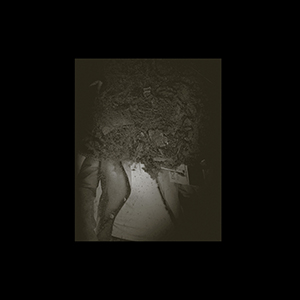 The titular MB on this record is not the Italian noise pioneer, but GOG's Michael Bjella with Robert Skrzyński (of Micromelancolié) in collaboration. Black Box Recordings may not resemble Bianchi in any obvious way, but the duo have a similar raison d'être of utilizing purely dissonant electronics, roughly recorded found sounds, and the occasional interjection of conventional melody and instrumentation. Like its title would indicate, it is a bleak and disturbing collection of sounds that could easily be the final recordings of a cataclysmic event.
The titular MB on this record is not the Italian noise pioneer, but GOG's Michael Bjella with Robert Skrzyński (of Micromelancolié) in collaboration. Black Box Recordings may not resemble Bianchi in any obvious way, but the duo have a similar raison d'être of utilizing purely dissonant electronics, roughly recorded found sounds, and the occasional interjection of conventional melody and instrumentation. Like its title would indicate, it is a bleak and disturbing collection of sounds that could easily be the final recordings of a cataclysmic event.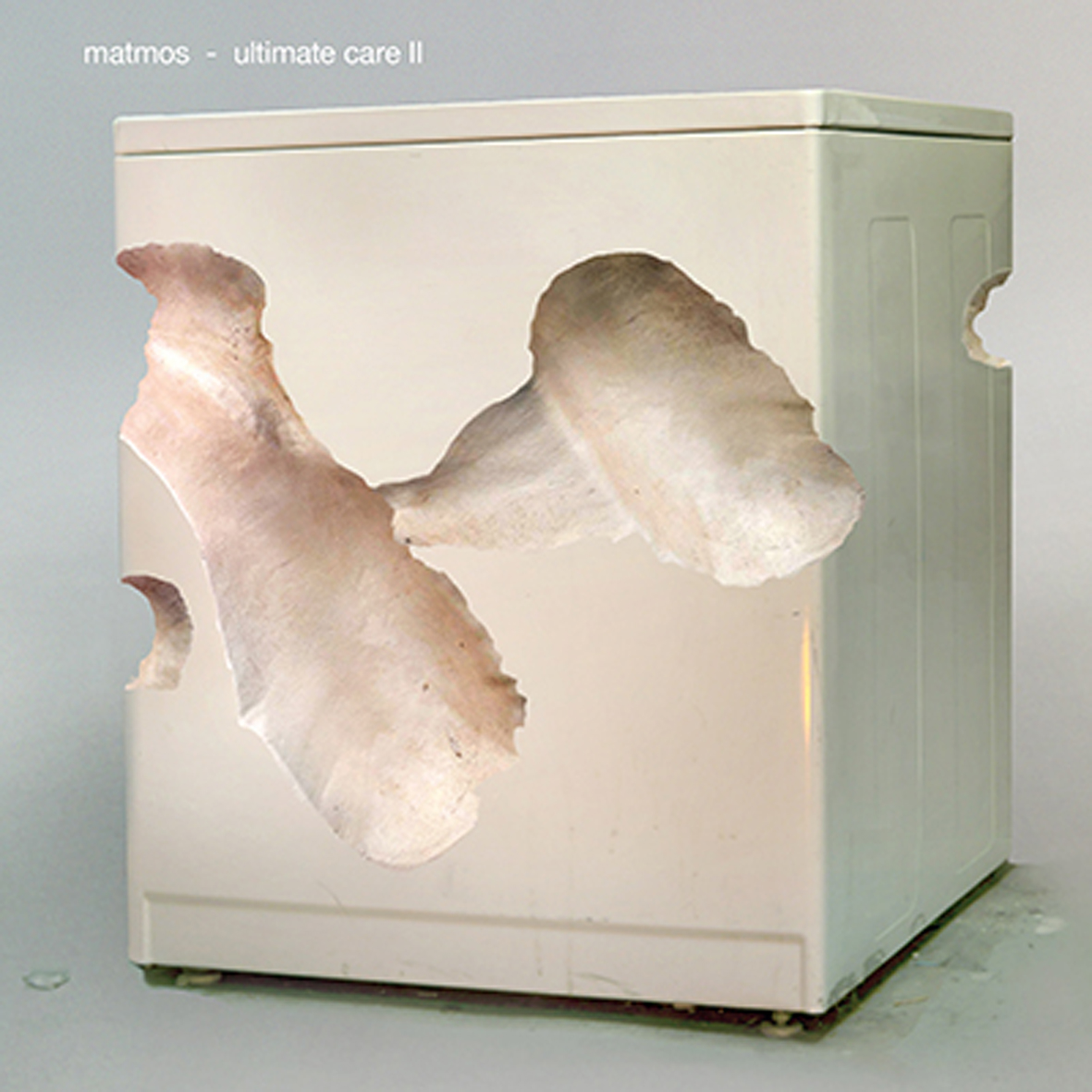
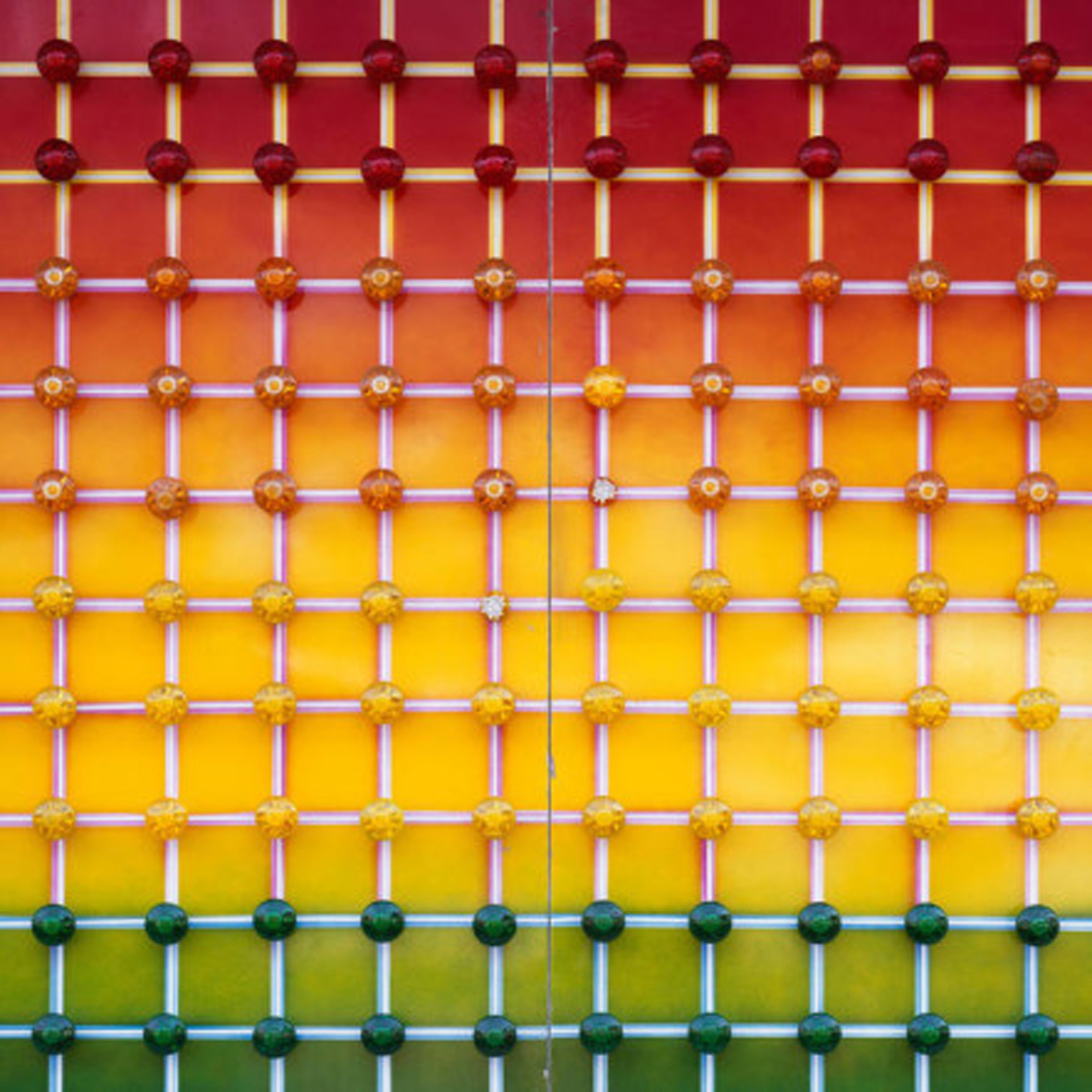 This trio featuring ubiquitous pianist Nils Frahm is one of the more pleasant surprises that have come across my path in recent memory, as I expected some sort of bloodless avant-jazz/post-rock hybrid, but was instead treated to quite an innovative and unique album (albeit quite an understated one as well).  I suspect a lot of that success is due to the band's exceedingly unconventional recording process, as they spent 8 years recording, re-recording, editing, recombining, and endlessly tweaking these pieces before finally concluding that The Gamble was finished.  Consequently, whatever these songs sounded like when they were originally played is probably a hell of a lot different from what ultimately wound up here.  To my credit, I was right about this album being a sort of avant-jazz/post-rock hybrid, but all of the instrumentation is so blurred together that The Gamble transcends either genre entirely and instead sounds like a strain of dub techno that is just as influenced by Latin percussion as it is by Jamaican dub. Except when it sounds like the greatest album that Tortoise never recorded.  Or when it sounds like something else entirely.
This trio featuring ubiquitous pianist Nils Frahm is one of the more pleasant surprises that have come across my path in recent memory, as I expected some sort of bloodless avant-jazz/post-rock hybrid, but was instead treated to quite an innovative and unique album (albeit quite an understated one as well).  I suspect a lot of that success is due to the band's exceedingly unconventional recording process, as they spent 8 years recording, re-recording, editing, recombining, and endlessly tweaking these pieces before finally concluding that The Gamble was finished.  Consequently, whatever these songs sounded like when they were originally played is probably a hell of a lot different from what ultimately wound up here.  To my credit, I was right about this album being a sort of avant-jazz/post-rock hybrid, but all of the instrumentation is so blurred together that The Gamble transcends either genre entirely and instead sounds like a strain of dub techno that is just as influenced by Latin percussion as it is by Jamaican dub. Except when it sounds like the greatest album that Tortoise never recorded.  Or when it sounds like something else entirely.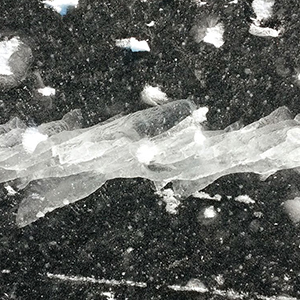 Like her debut release, Valence (2012), Montreal's France Jobin’s work is from the traditional school of electronic minimalism, in which the sparsest of sounds and instrumentation are utilized to create complex, nuanced sculptures of tone and texture.  Inspired by quantum physics and actualized by a variety of processing and modular synthesis, this album is yet another strong entry in her growing discography.
Like her debut release, Valence (2012), Montreal's France Jobin’s work is from the traditional school of electronic minimalism, in which the sparsest of sounds and instrumentation are utilized to create complex, nuanced sculptures of tone and texture.  Inspired by quantum physics and actualized by a variety of processing and modular synthesis, this album is yet another strong entry in her growing discography. Federico Durand’s music has always had an extremely intimate, hushed quality to it; akin to being in a small room with him as he records, and his newest release is no different. A Través Del Espejo, which translates to "through the mirror" is an apt metaphor for the sound of this record, given its glassy clarity and deliberate, brilliant use of loops and repetition. His use of Spartan instrumentation is especially effective, making the absolute most out of even the smallest sounds culminating in a gorgeous, multifaceted record.
Federico Durand’s music has always had an extremely intimate, hushed quality to it; akin to being in a small room with him as he records, and his newest release is no different. A Través Del Espejo, which translates to "through the mirror" is an apt metaphor for the sound of this record, given its glassy clarity and deliberate, brilliant use of loops and repetition. His use of Spartan instrumentation is especially effective, making the absolute most out of even the smallest sounds culminating in a gorgeous, multifaceted record. According to the website, Suppedaneum’s mission is, in part, to probe the relationship between music and composition. All the more reason to pay special attention to the score that accompanies The Letter, Joseph Clayton Mills's 22-minute cassette EP that comes close to not being an EP at all. With the exception of the first, each of the 100 cassettes that Mills assembled for this project is a hand-duplicated copy of an earlier copy. Thanks to the technological shortcomings of the medium, successive renderings of The Letter past the first contain imperfections not present in previous versions, meaning each tape is a uniquely worn-down object. As the liner notes put it, "The Letter is a piece of music designed to approach disappearance." Strangely, the music is not a performance of the aforementioned score, a piece titled Abscission that comprises the images of two trees and three pairs of musical staves. The tape’s sine tones, Throbbing Gristle-like noises, and warped piano phrases were inspired by those images, but the disconnect between them predominates. It’s one of the ways in which Joseph distills the disjunction and cohesion between sound and writing.
According to the website, Suppedaneum’s mission is, in part, to probe the relationship between music and composition. All the more reason to pay special attention to the score that accompanies The Letter, Joseph Clayton Mills's 22-minute cassette EP that comes close to not being an EP at all. With the exception of the first, each of the 100 cassettes that Mills assembled for this project is a hand-duplicated copy of an earlier copy. Thanks to the technological shortcomings of the medium, successive renderings of The Letter past the first contain imperfections not present in previous versions, meaning each tape is a uniquely worn-down object. As the liner notes put it, "The Letter is a piece of music designed to approach disappearance." Strangely, the music is not a performance of the aforementioned score, a piece titled Abscission that comprises the images of two trees and three pairs of musical staves. The tape’s sine tones, Throbbing Gristle-like noises, and warped piano phrases were inspired by those images, but the disconnect between them predominates. It’s one of the ways in which Joseph distills the disjunction and cohesion between sound and writing.
